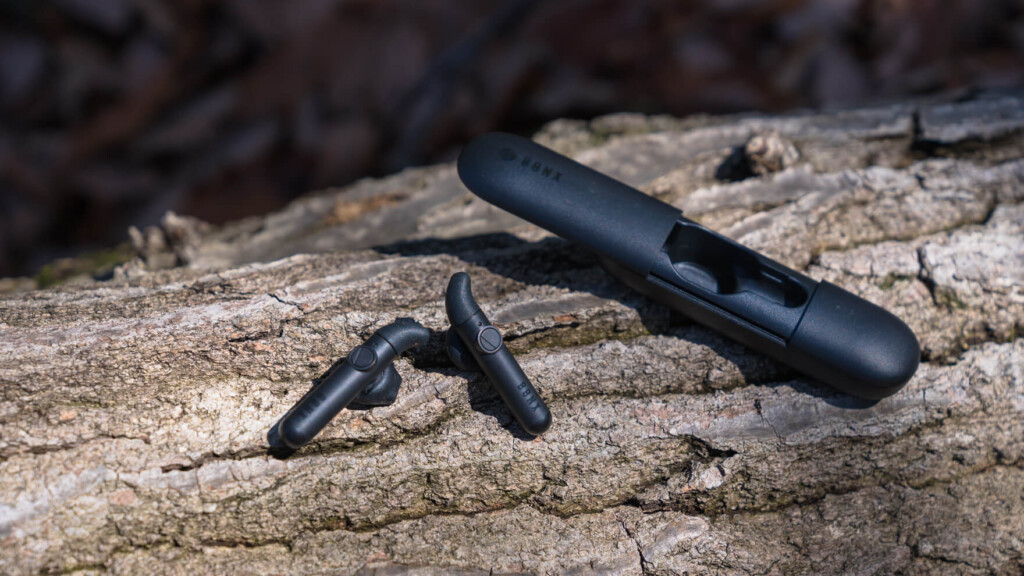
Review: When I tried out the BONX mini, a super-small transceiver that has been talked about in crowdfunding, for skiing and hiking
In the outdoors, there are often times when you want to talk to someone a little away. For example, when backcountry skiing, you often slide down one slope at a time, and after you slide down, you send a signal to the person above you that you are OK with the standby. In addition, when climbing or climbing a stream, you need to set up the fulcrums above and below the walls and waterfalls, so loud communication and whistle are essential. Even when hiking, when the pace becomes wider and the distance between you and the other person becomes wider, it becomes difficult for each other to reach your voice.
In such cases, it is certain that radios (transceivers) have been a common means of communication in the mountains long before mobile phones became popular, so they can communicate with other people, but they are heavy and bulky to carry with you, making them too extravagant to carry around with you (although there is nothing more reliable for emergency use in case of a disaster).
BONX mini" currently being crowdfunded . Without thinking about the details, I reflexively clicked on the spinal cord, so I was able to try it first. I tried using it this winter on skiing and hiking, so I'll give you a review.
table of contents
- "I wanted a device that allows me to talk easily with someone I'm a little bit away from while I was on the move." What can the BONX mini do?
- Before you start using: Complete the initial settings
- I'll try using it at a ski resort right away
- Try it on a hike
- Summary: Will the BONX mini replace a transceiver?
"I wanted a device that allows me to talk easily with someone I'm a little bit away from while I was on the move." What can the BONX mini do?
First, we've summarized the device and what it can do from the Bonx homepage.
The Bonx mini is the latest small model of the Bonx Grip, a small communication device that was created with the desire to "simple talking with friends while skating in the snowy mountains." With a Bluetooth-connected smartphone and an Internet connection, you can make two-way calls with up to 10 people, no matter how far you are. The speech detection technology and a unique algorithm noise filter provide high sound quality that is stress-free compared to conventional transceivers. Even in places where radio waves are unstable, the automatic reconnection function and delay minimization algorithm allow you to continue talking with minimal stress.
Before you start using: Complete the initial settings
The Bonx mini itself comes with one earphone for one ear and a dedicated charger. It is so compact that it doesn't look strange even when compared to wireless Bluetooth earphones that I often see these days (length x width x thickness = approximately 50 x approximately 17 x approximately 17 mm). Anyway, don't forget to put it in a case with a dedicated charging function to charge it first.
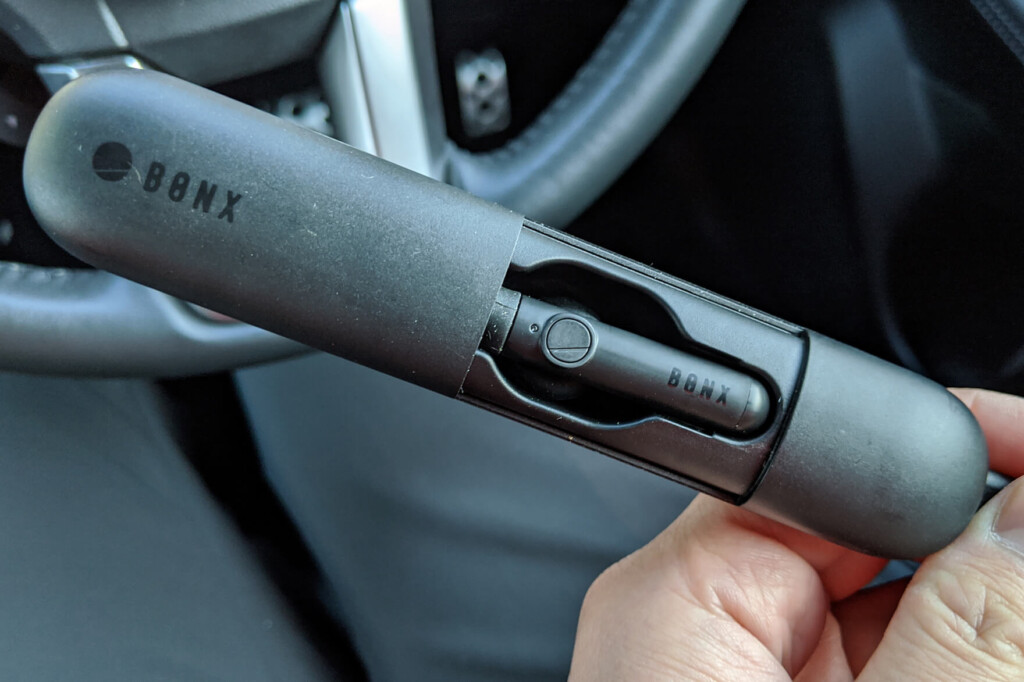
The dedicated charging case itself has a built-in battery and can be charged in about an hour.
While charging, install the app on your smartphone. Once charging is complete, turn on the device, pair the earphones with your smartphone, and complete the initial settings.
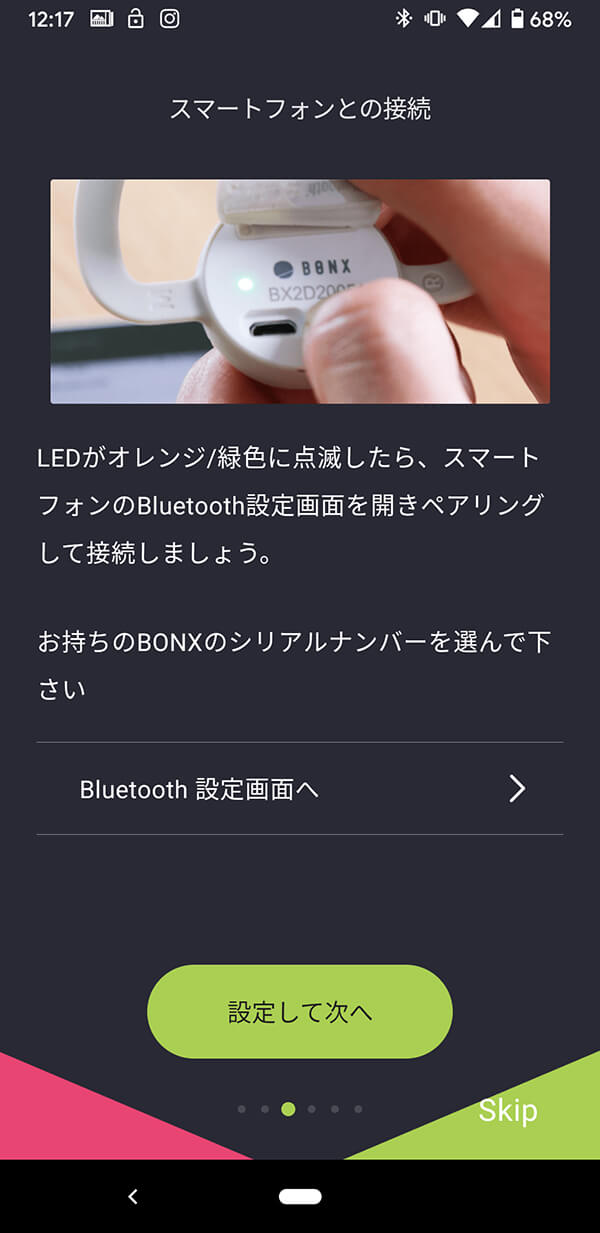
Once paired, I'll try putting it on my ears right away. It's lighter than you can imagine from the appearance, so it's so light that you can't tell if it's worn. Furthermore, the earphones have a rotating horn-shaped protrusion that fits comfortably by matching the grooves in the ears, making them less likely to come off than expected and are very comfortable to wear. I've been waiting for something like this!
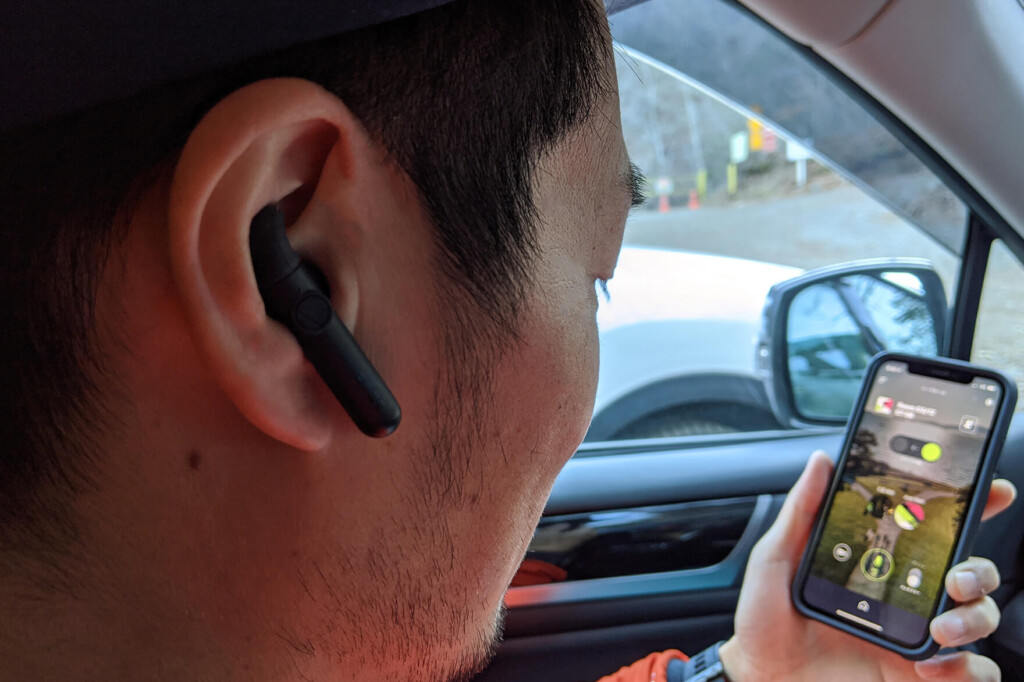
It feels very comfortable to wear and doesn't come off easily.
After that, if the speaker/microphone test is not correct, the initial setup is completed successfully.
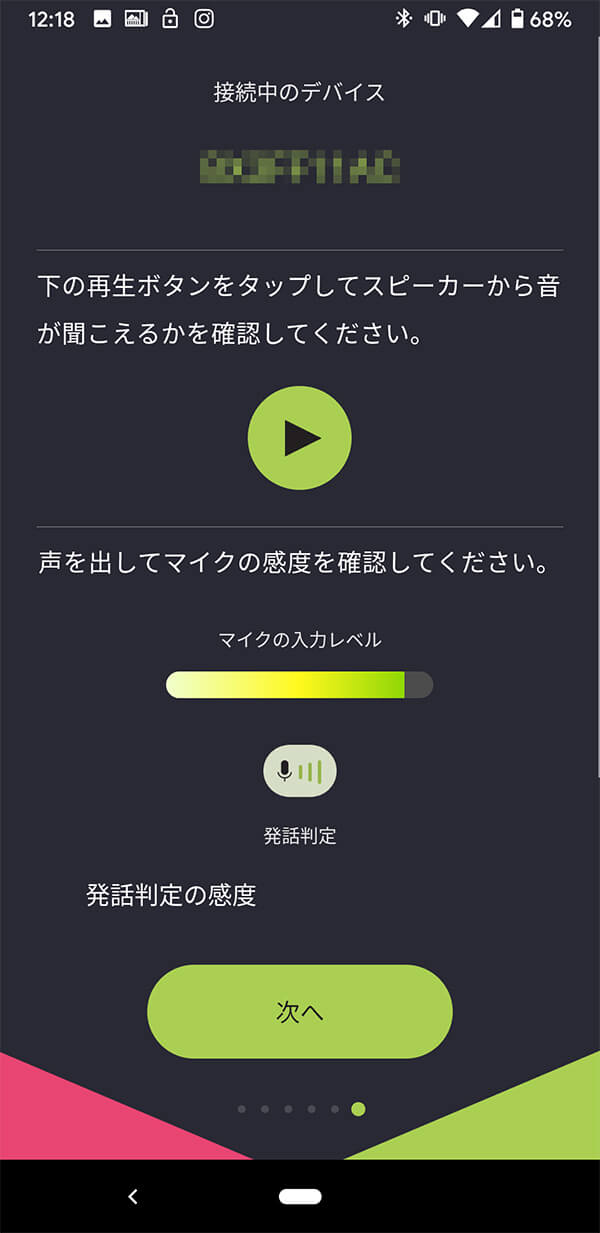
I'll try using it at a ski resort right away
The first time I tried out Bonx was at a ski resort in the Joetsu region. Although it is done in the weather, it is generally difficult to reach conversations, and if you ski with a fairly large group, the pace often shifts and the gaps often occur. If you can have a constant conversation at times like these, you will be able to understand each other's situation and it should be of great value.
Of the Bonx, which you have completed the initial settings above, someone will first open a chat room on the app and enter the chat room (enter the room key), allowing you to have a hands-free conversation with other users in real time.
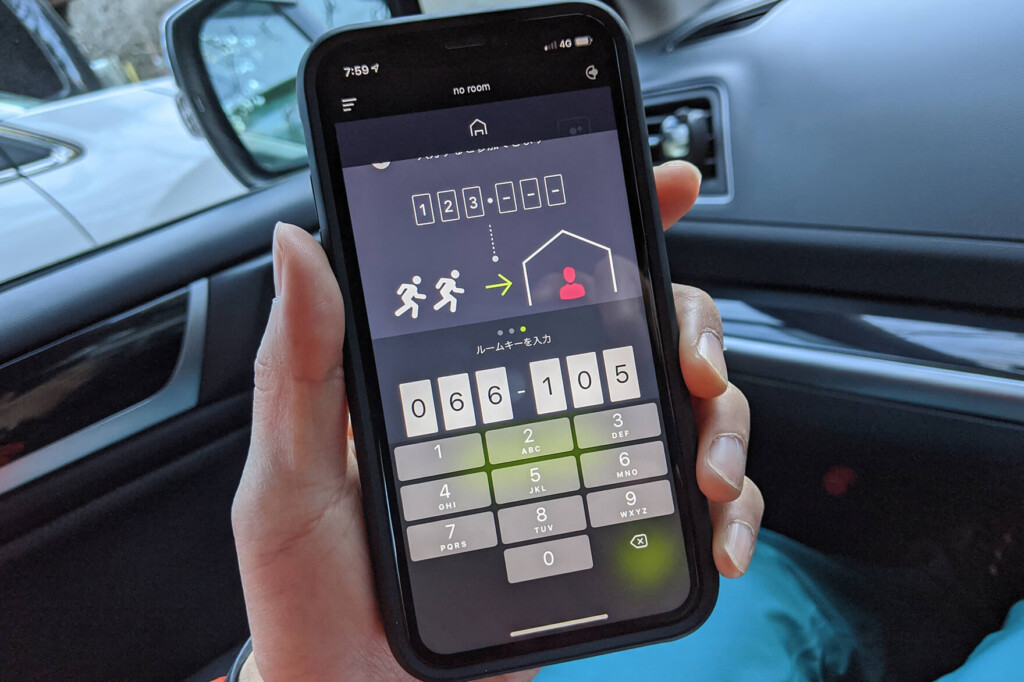
Someone opens a chat room and enters the room key for that chat room to allow two-way communication.
You can experience the convenience of being able to talk as usual, regardless of distance. Microphone sensitivity is no problem even when over knit hats
After using it on the slopes, I am naturally moved by the situation where I can speak with the other person in a normal speaking voice, even when I'm far away. The sound quality is more than a transceiver, but it's not as good as a voice chat on LINE or Skype. In any case, it's not difficult to hear at all.
While using the phone, I wore a knit hat over my ears and the microphone was completely covered, but the microphone was very sensitive, and I was able to even pick up the voices of other people who were talking to me, and the other person could hear it. I tried using it on ski resorts where the wind and snow were not on sunny days, but there was no particular difference in the smoothness of the conversation in any situation. Even if you enjoy skiing without worrying about each other's pace, you can simply feel the convenience of joining in quickly.
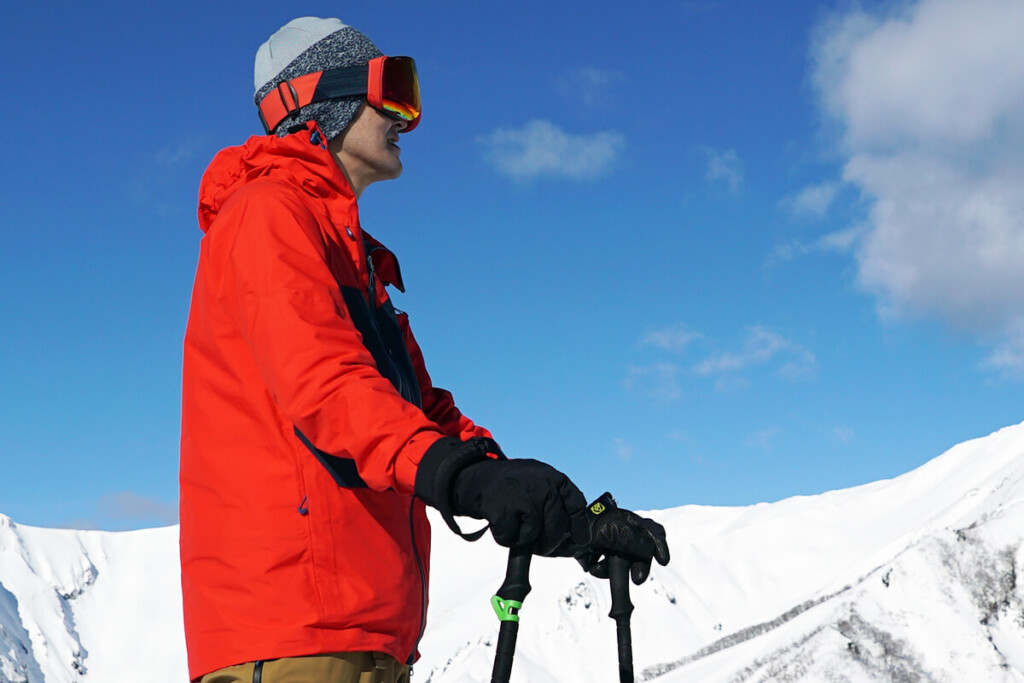
Even if the earphones were covered in a knit cap, the conversation was smooth.
It's not strong in unstable radio wave conditions.
On the other hand, I have to say that the fragility in areas with weak radio waves and the battery life in cold regions, which I had been a little worried about, was a bit disappointing.
First of all, when I entered a ski resort where radio waves were difficult to reach, such as a forest course, there was an audio announcement that "it was difficult to reach," which was in the worst case scenario. It's not hard to imagine that if used in side or backcountry, the frequency will increase dramatically. Of course, I knew that this device could be used in situations where the internet was connected, so I was left with the idea that this was inevitable, but I was disappointed because I was expecting a little bit of expectation from the fact that it would "achiev in an unstable radio wave environment."
However, unlike other group talk apps, even if the signal is disconnected once, they will automatically try to connect once the signal is improved, so you can talk again without any hassle, even if the signal is improved. In this regard, some people seem to find this a major benefit to people who have used other group talk apps.
Be careful of battery life too
What was even more unexpected was that the battery life was faster than I expected. Officially, the battery of the earphones itself lasts for up to 3.5 hours, but when used at a ski resort that was around 0 degrees, it took two hours to carry it. I thought I'd started using it in the morning, but it just quickly stopped working. There are some who say that if you charge it during your lunch break (put it in a charging case), you can use it for the morning and afternoon, but even so, it's not surprising to see it not be dissatisfied. Apparently the battery will be improved in the final shipping version, but I'm looking forward to that.
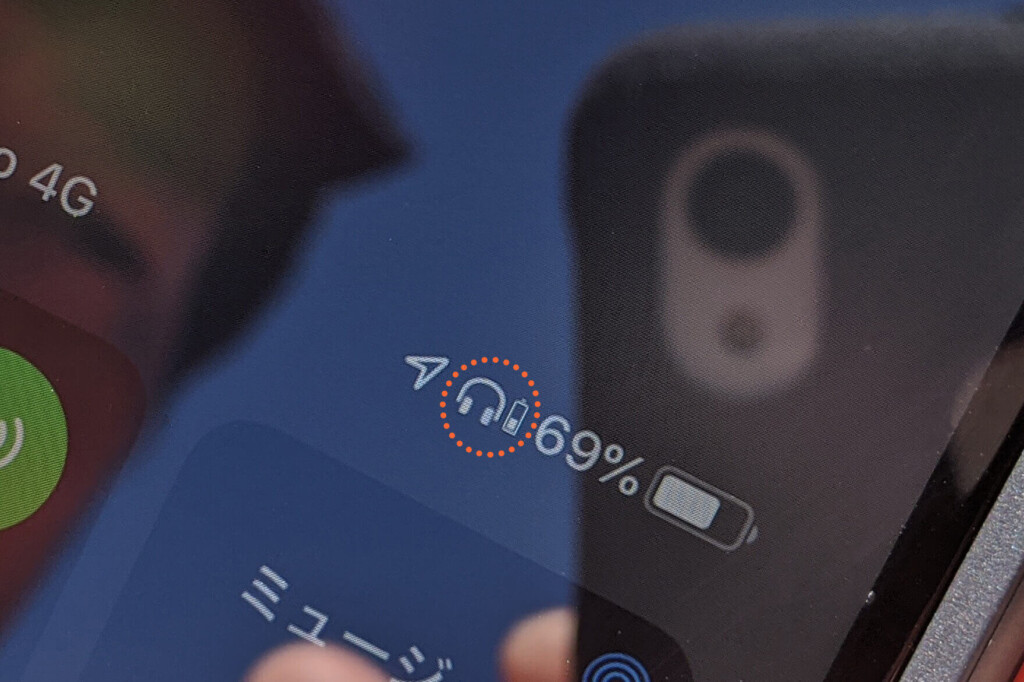
When I was using it outdoors for half a day, I was very concerned about the poor battery life, especially at low temperatures.
Try it on a hike
Is the battery only lasting when the temperature is low? And what about a normal hike that could make the signal situation unstable? To see this again, I tried it out on a hike this time. The location is a hiking trail located near Lake Kawaguchi, the mountains of Mt. Fuji.
Even in a quiet place, smooth conversation is possible without any noise other than voice. I don't care about breathing either
I was very pleased with the smoothness and naturalness of the conversation in a normal way. I didn't notice it at the ski resort, but it only picks up the sound of conversation, and even when you start to get out of breath from the climb, the heavy breathing doesn't get into the microphone, so you can climb without looking up normally in front and back, and even if you can no longer see each other, it's very convenient to be able to climb while talking without worry.
The weakness of radio waves and battery life are still severe here too.
However, the unstable radio waves that we had seen at ski resorts have become even worse in low mountain forests, and therefore conversations have become more frequent and delayed than they do in ski resorts. Also, the battery life was definitely better than the one I tried at a ski resort, but the battery ran out completely in about 3 hours. That may be the case given the specs of "up to approximately 3.5 hours", but with these specs, it is not always usable for day hiking.
I also noticed this while hiking that the Bonx mini has a water-resistant and shock-resistant function that the previous model Bonx Grip has, and the wind noise reduction function is omitted, so when wind blows on the ridge, it directly causes wind noise. To prevent this, you will need an optional windshield that will be released.
Summary: Will the BONX mini replace a transceiver?
I was so excited that I wanted it to be such a lightweight, compact gadget that people from afar can easily talk to each other in the outdoors where radio waves are unstable, so I tried it with high hopes.
To put it simply, it can be said that it is much easier to use than a group chat app on smartphones, but in the first place, it is a shame for users with high hurdles who are looking for smart gadgets that can be used as transceivers in the harsh outdoor environment.
It was extremely easy to use in a "connected situation," and it couldn't be more comfortable to wear and feel uncomfortable or stressed about talking. It is undoubtedly a convenient item as expected if it was used in a relatively stable location, such as public roads, camping, open areas such as open areas such as beaches and lakesides, and if it was used as a toy. However, it is true that the essential connectivity and battery were somewhat unsatisfactory to rely on activities used outdoors, outside the control area, that is, in the backcountry. Compared to the previous model Bonx mini, the hardware has significantly improved, so from here onwards (not to mention the need for powerful radio waves as radio waves) it is hoped that it will evolve, even though it is a selfish request, as long as it is a device that can easily and easily make stable, constant calls, even if it is just a few tens of meters.
Go to Bonx mini crowdfunding page
Recommended points
- Lightweight and high fit without any discomfort
- The pure joy and convenience of being able to skate and walk while talking.
- It gives you a sense of security that you can understand each other's situation, even if you take action without worrying about each other's pace.
Points that interest me
- Radio waves tend to be interrupted on some mountain trails and ski resorts, such as forest areas.
- Even in places that were not interrupted,
there will be a significant delay (time lag) in places where the signal is weak. - The battery life is short (if it becomes unusable after about 3 hours,
it will run out quickly on a day hike. It was also shorter under low temperatures such as skiing.) - Can't prevent wind noise (Is it necessary to use a windshield sold separately?)



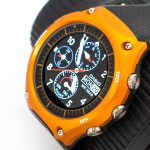 Review: Casio Smart Outdoor Watch WSD-F10 - The possibilities of smart outdoor watches that users of PRO TREK have felt -
Review: Casio Smart Outdoor Watch WSD-F10 - The possibilities of smart outdoor watches that users of PRO TREK have felt -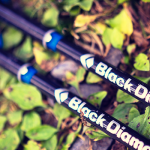 Review: Black Diamond Distance Carbon FLZ
Review: Black Diamond Distance Carbon FLZ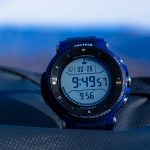 Review: We looked at how easy it is to use the Casio PRO TREK Smart WSD-F30 for mountain climbing and hiking.
Review: We looked at how easy it is to use the Casio PRO TREK Smart WSD-F30 for mountain climbing and hiking.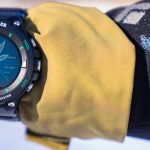 Review: Enjoy the winter outdoors with the winter-style Casio PRO TREK Smart WSD-F20X
Review: Enjoy the winter outdoors with the winter-style Casio PRO TREK Smart WSD-F20X